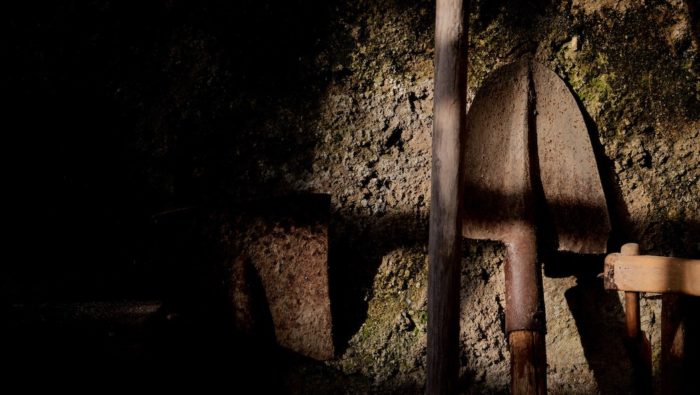
We Should all Get our Hands Dirty: Reflections on Why Lawyers Should Become Archaeologists

This post is part of a series profiling upcoming pieces in the second special methodology edition of the Journal of Law and Society, to be published later this year.
I am a lawyer not an archaeologist. But I do class myself as a legal archaeologist. I discovered this identity during my doctoral studies when I employed the methodology of legal archaeology to analyse the landmark case of Gillick. Legal archaeology is a phrase that was popularised by Brian Simpson. The methodology is essentially a metaphor for digging into a legal case to examine it at the ground level. It enables a researcher to look at a case in a different way to the traditional doctrinal approach that lawyers are trained in and somewhat constrained by in law school. Any case is capable of being the subject of a legal archaeology study, even the most unassuming and ordinary case. But those which are well-known for being leading, landmark, or precedent-setting can make interesting test subjects. These types of cases have often already been subjected to extensive scholarly analysis. But when we use legal archaeology, we can find out something new about even the most over-analysed case.
In contrast to the doctrinal approach, legal archaeology aims to develop a contextual history of a case using different ‘artefacts’ to piece together micro-level details in order to understand the case as it happened at the time. The search might begin with a reading of the reported case but will then dig deeper into a wider range of sources, including non-legal sources perhaps found in archives or through empirical research. This could include trial transcripts, counsel’s papers, newspaper articles, written correspondence, or perhaps personal communication with parties connected to the case. Legal archaeology brings a case to life and attempts to uncover information about the lead up to a case and understand how it was constructed. It incorporates the texture and variability of human activity by looking to the people, including the legal and non-legal actors, affected by a case, such as the litigants and those in their wider social and legal spheres. It explores the unique story and motivations of the litigants, and perhaps failed litigants, prior to the case and considers their social circles, cultures, and experiences. When we prioritise doctrine, it is easy to forget that cases deal with people’s lives. But when we free ourselves from doctrine, we realise that each case is a unique human story that has probably been deliberately narrowed by lawyers and judges in case reports.
A challenge in my own legal archaeology study was the messy and unwieldy nature of the process. Coming into possession of previously unseen ‘artefacts’ is overwhelming. Gaps in knowledge are likely to remain as there is usually a limit to how much information a researcher can obtain. In practice, getting dirty and digging at the ground level meant travelling to different places, speaking to various people, and getting lost in dusty boxes of materials, often not really knowing what I was looking for or how to assemble the information. But legal archaeology gives us the freedom to embrace the randomness of findings and the reconstruction of a case narrative is a reflexive process. A researcher does not have to limit themselves to making decisions about what to look for and can keep an open mind and be responsive to all resources and information, as variable as that may be. As many historians and indeed archaeologists will know, the complexity and indeterminacy of studying the past using original sources is a demanding and time-consuming process. The discovery of new information relies on serendipity and materials do not necessarily offer a clear picture. Legal archaeology is therefore for those scholars who are fortunate enough to discover new sources and who are willing to patiently wade through materials and carefully craft them into a rich and coherent narrative.
Legal archaeology teaches us that cases should not be treated as having a fixed narrative. There are other possible ways of producing a storyline depending on the evidence found and who is constructing the narrative. It reminds us of the subjectivity of law and why we should not take the factual account in a case report at face value. Cases are acts of interpretation and we must dig around them in order to understand what actually happened and why the facts were presented a certain way in the law reports. When using legal archaeology, we look critically at law reports in terms of what information is included and excluded. Although this muddies the neat, tidy, and seemingly objective accounts of law we get from the traditional doctrinal approach, both methods can sit comfortably alongside each other. When we learn more about how a case has come about, we can better tackle bigger questions that we might more commonly consider within a doctrinal study, such as how the doctrine of precedent operates and how cases move through the legal system. Further macro-level observations become possible when we take the time for micro-level analysis. For example, we might gain an understanding of how some individuals have been represented in the legal system, or we might be able to highlight where strategic actions have been made, or perhaps identify where a case has been brought as part of a political movement or to secure political goals. Legal archaeology therefore equips Socio-Legal researchers with a valuable tool by which they can examine a case and potentially other broader questions about the law. Becoming a legal archaeologist is a rewarding and transformative experience. It changes the way you see all cases. If a case intrigues you, I encourage you to get your hands dirty and dig.

